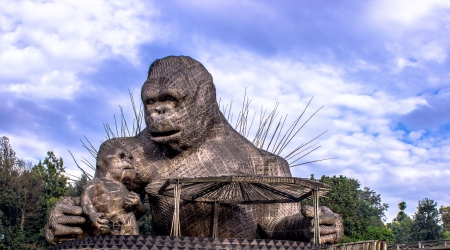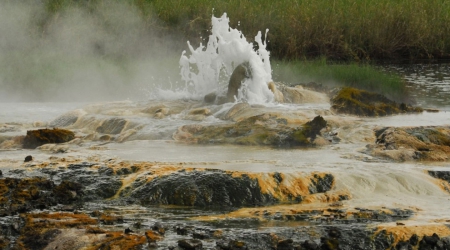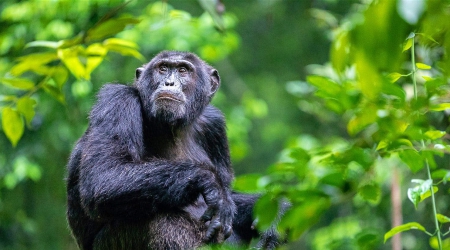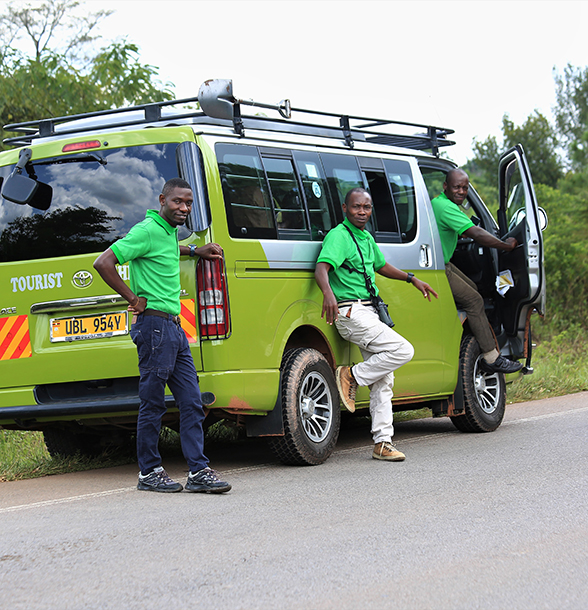Established way back in 1952 and originally named Kazinga National Park, this park was later renamed Queen Elizabeth National Park in commemoration of the late Queen Elizabeth II’s visit to Uganda in 1954. Besides being Uganda’s number one safari destination, it is also one of the oldest and largest parks in the country sitting on a land area of 1978km2 within the Western Rift Valley of Africa and stretches across three different districts of Rubirizi, Kasese and Rukungiri in the South western Region of Uganda.
Known for harboring the big four safari animals which include Lions, Leopards, Elephants and Buffalos, Queen Elizabeth National Park is home to a total of 95 mammalian species such as Hippos, crocodiles commonly seen on the Kazinga channel. Lots of other species like the antelopes, hyenas, warthogs and bush bucks reside in the savanna grasslands and woodlands. The diverse vegetation supports their survival. Over 600 bird species call the park home; this number is almost half of the East African bird population which prompted Birding International to mark the area as an IBA (Important Birding Area).
Various animals are known to reside in specific areas of the park, such as the Ishasha sector which is known for sheltering the tree climbing lions and Topis. Maragambo Forest and Kyambura Gorge are excellent spots for primate trekking, specifically the monkeys and chimpanzees. With a higher chance of seeing the big 4 along different game tracks, the Kazinga Channel offers exciting views of Nile crocodiles, hippopotamuses and other water animals while enjoying a relaxing boat ride.
The park has been recognized and awarded by popular magazines such as Forbes, African Geographic, Bradt guides, Huffington Post, CNN and lots of travel guides.
Attractions in Queen Elizabeth National Park.
Wildlife.
With over 600 birds and 95 animal species to observe, during various activities to partake while in Queen Elizabeth national park such as game drives – carried out both during day and night. Game drives offer opportunities to view animals such as the big four and nocturnal animals like hyenas and lions.
Bird watching and chimpanzee trekking adventures are carried out in Kyambura Gorge, a home to verdant flora and fauna.
Katwe Explosion Crater Lake.
The lake was created by an explosion and is located in the northern region of Queen Elizabeth National Park. Its alkaline waters are used to make salt, and this practice has been going on for a while. Many tourists come to see and learn about how this activity is carried out by hand.
Kasenyi Plains.
An ideal area for game drives because of its savannah vegetation that attracts many animals like the Uganda kobs – a species of antelopes, lions, antelopes, and buffalos. It is a habitant to almost half of the park’s population.
Kazinga Channel.
A 32km long water channel joining Lakes Edward and George with the waters flowing towards Lake George from Edward. The water canal offers boat rides with two trips each day with morning trips commencing at 11:00 am to 1:00 pm and evening rides from 3:00 pm to 5:00 pm.
During the cruises, you can notice the both water and land animals such as crocodiles, hippos and elephants, buffalo’s drinking water along the banks respectively. The cruises also offer beautiful views of the parks features like vegetation and landscapes.
Kyambura Gorge.
Chimpanzees and other primates, including monkeys, live in a forested valley that is 100 meters deep. Though chimpanzees are naturally aggressive, the park has habituated groups that can be visited by tourists.
A 100-meters’ deep underground forest is home to primates like monkeys and chimpanzees which can be trekked due to the presence of some habituated groups. The forests vegetation harbors a variety of bird species making it a great destination for bird watching.
Birds.
According to Birding International, Queen Elizabeth National Park is an Important Birding Area (IBA) being home to over 600 different bird species; it’s a haven for birdwatchers. Many different species, including Swamp flycatchers, flamingos, kingfishers, African mourning birds, and more, call the park’s diverse habitats, such as the forests, the Kasenyi area, and the Kazinga Channel home.
Mweya Peninsular
On the northern banks of Kazinga channel is a long peninsula projecting into Lake Edward. Because it provides ideal game views, it is frequently visited during game drives and offers a variety of sightseeing opportunities.
HOW TO GET THERE?
It’s a 6 hours’ drive from Kampala through Kampala-Masaka-Mbarara-Kasese highway, 389 km away from the Capital City. When driving through Fortportal and Kasese district however, it is 410 km.
By Air transport; from Entebbe International Airport, scheduled flights go to Mweya, Kasese or Ishasha airstrips taking only one hour or less.
WHEN TO VISIT?
The best months to visit Queen Elizabeth National Park are January through February and June through September. Since some migratory bird species arrive in the park between August and December and March and May, these months are regarded as the best for bird watching.















